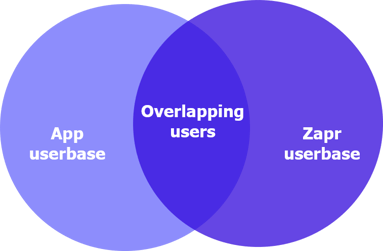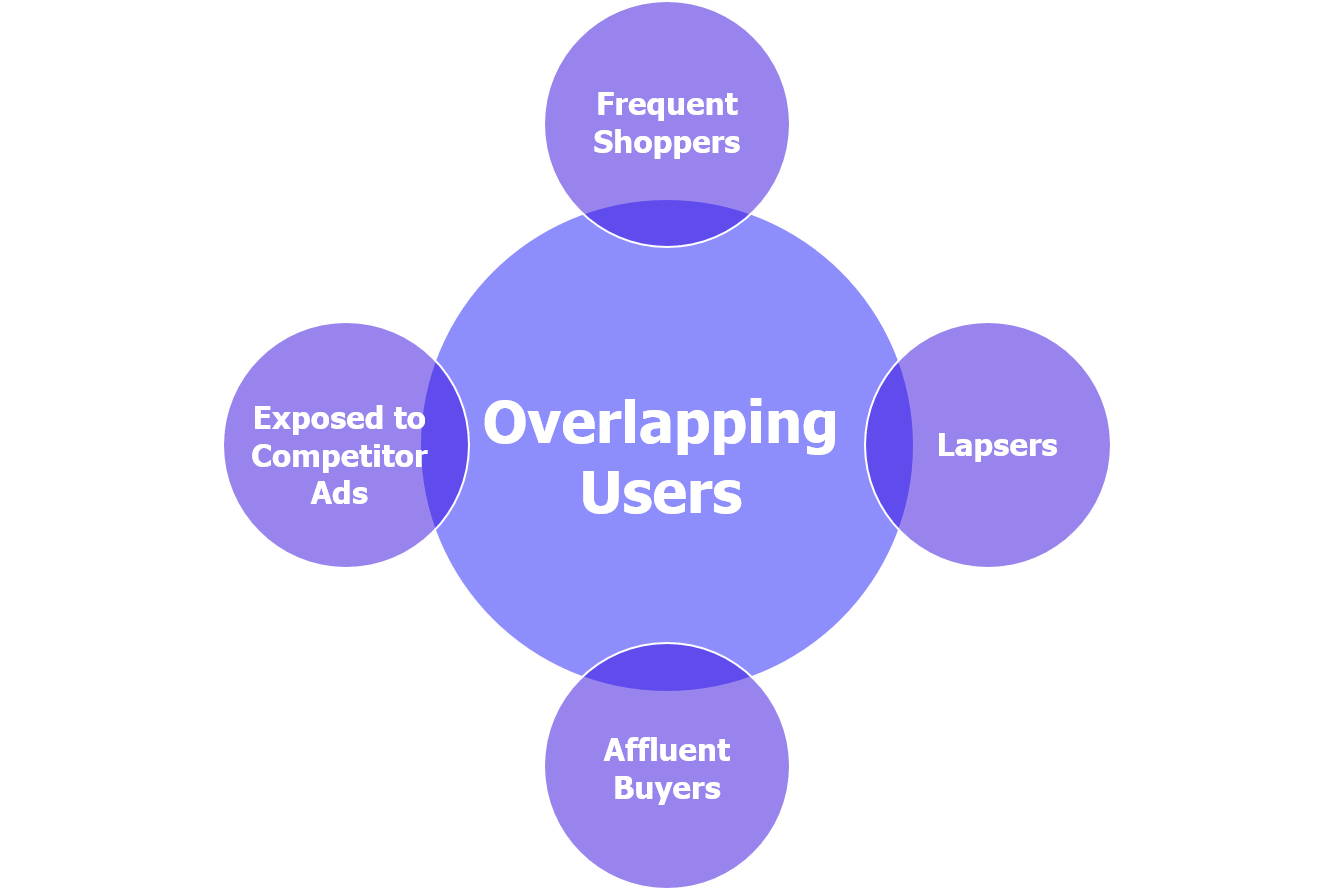For businesses with significant mobile app presence such as e-commerce, BFSI, entertainment, gaming etc., it’s easy to amass a ton of data on the online behaviour of app users which can be used to push the right digital ads. For example, Google search results of users can be used to trigger purchase for certain products on the app.
However, these brands have a major blindspot in the offline world because of their inability to tell what their relevant target group (TG) watches on TV. They end up spending crores on TV campaigns (which is not a bad thing) without being able to deterministically connect it with the actions viewers take on the app (which can be a bad thing).
ZAPR’S CONVEX IS THE FIRST AND ONLY SOLUTION FOR APP-BASED BUSINESSES TO GET TV VIEWERSHIP DATA OF THEIR USERS
Zapr has now launched Convex, a solution for app-based brands to get TV viewership data of different varieties of their app users. Using automatic content recognition technology (ACR), our system detects what smartphone users watch on TV on any channel at any given time (they are recognized as Google Advertising IDs without any Personally Identifiable Information). This way, we are able to capture every exposure they’ve had to TV content and commercials and their TV viewing habits and preferences. (You can read more about Zapr’s ACR expertise here).
Here’s what happens when app-based brands use CONVEX:
First, we get an overlap between the app’s user base and Zapr’s smartphone universe
The app gives us a set of its user IDs, segregated into different cohorts of their business interest (like high value vs low users, old vs new users etc.), and we run an overlap analysis to see how many of the app’s user-base fall within Zapr’s universe. This is necessary because Zapr gets its TV viewership data only from users who have given explicit permission. This common set of audience becomes the focus group for all further studies and analyses.

Now, the brand can solve two major challenges in ways that have never been done before:
1. TV viewership data - shows and channels app users watch, can be used to create effective TV media plans:
Problem: Brands cannot create TV media plans that ensure ads reach their app users who are potential buyers.
Most app based brands tend to overlook the fact that their TV campaigns are not effectively reaching the most important TG - app users who are most receptive to the brand’s marketing message. The segmentation they use currently includes only demographic, NCCS (New Consumer Classification System) and location filters.
However these are not synonymous with the TG definition followed by brands which may include filters like digital awareness and savviness, potential to install and use apps, openness to digital transactions etc. For example, if there are seasonal offers being advertised on TV, the ads need to reach users who will take action on the app. To create such customized media plans for their own app users, brands need to know the exact shows and channels frequently watched by the relevant set of users.
Convex solution:
By conducting overlap analysis, Zapr finds out the actual users of the app and understands their behaviour which can be used to target more such, similar set of audience. Zapr conducts in-depth study on the TV viewership preferences of the brand’s app users and narrows down the shows and channels that they watch. To make life simpler, we even create the complete media plan for brands by providing a combination of shows and channels that are guaranteed to reach users.
The most interesting part of this analysis is that we’re able to further customize TV viewership analysis for specific segments of app users. For example, if a brand wants to launch a TV campaign for those who are heavily influenced by its competitors, Zapr can handpick the right shows and channels to reach them.
Here are some of the sample segments which can be useful for brands and for whom we can provide insights to create custom TV plans:

- Light, moderate and heavy app users: We can analyze the TV viewership of frequent shoppers, lapsers who are not active on the app, or occasional buyers. Using this data, brands can create TV media plans that will influence them towards a desired behaviour.
- Users exposed to competitor TV ads: It’s no secret that the brand which gets the most eyeball inevitable grabs higher share-of-mind among audiences. Therefore to neutralize the impact of its competition, it’s important for brands to identify those users who have been highly exposed to competitor ads, especially in the world of e-commerce apps where products are moving rapidly and consumer decisions are made quickly.
Zapr finds those users who have been exposed to competitor’s ads and creates a highly customized TV media plan to win back their attention and hopefully, their loyalty. - Affluent users who can afford premium products: Let’s say a brand wants to launch a TV campaign for a range of premium products, they need to know where their affluent users spend time on TV. One way to do this is to identify users who use high-end devices and advertise on the channels they watch.
Zapr divides an app’s user-base by the kind of mobile devices they use and gives TV viewership data for each segment: high-end devices which cost above 15k, mid-end phones around the range of 7 - 15 k and low-end devices which are below 7k. This way, depending on the price range of products they want to push for, a brand can bid specific channels and shows to reach users having high, medium or low purchasing power.
2. Impact of TV ad exposure can be measured through user behaviour on the app:
Problem: App based brands can’t attribute TV ads to app usage because they don’t know the TV ad exposure of app users.
This makes it impossible to connect huge TV advertising spends (which can go upto 685 crores for a single quarter) with actual user behaviour on the app. So while you can tell that a TV campaign has boosted sales to some extent, you can’t be certain of how it impacts individual actions on the app such as increased browsing or buying, while similar estimates and measurements are available for digital advertising.
Convex solution:
After your TV media plan has been executed, Convex gives you an in-depth analysis of how your TV ads performed among your app users.
First, the brand provides cohorts which they want us to analyze, such as people who downloaded the app while the TV campaign aired live, or existing users who became active and made transactions during or after the campaign period. Next, we perform an overlap analysis for these segments with Zapr universe and understand how the ads impacted these segments of users.
We basically find the unique reach (how many people watched it) and frequency (how many times they did) by granularities of channels, genres and time-slots such as primetime or non-primetime and even device classes. This way, the brand is able to analyze every factor that contributes to the campaign’s success metrics, and can use it to optimize its future campaigns.
Now the brand can map every action an individual user takes on the app to their TV ad exposure, for example Do they buy something after watching the TV ads? Have they become more active? Do new users join the app?
This way app based brands can accurately measure Return Of Investment for their TV campaigns directly on the app.
HOW SWIGGY USED THE CONVEX SOLUTION FOR ITS IPL AND FESTIVE SEASON CAMPAIGNS
Swiggy used the Convex solution to measure the impact of two of its major TV campaigns and found invaluable data. The study was conducted across 18 priority cities where Swiggy operated, resulting in invaluable data which helped the brand create even more effective TV media plans.
“Zapr brings along a lot of solutioning that is currently unavailable with conventional research methodologies. The partnership has helped us with a ton of insights that have aided our media planning and creative optimization last year. The possibilities are limitless.”
Umesh Krishna K, General Manager - Brand Marketing
Watch the full testimonial video below:
You can download the Swiggy case study here.
So why use Convex?
The advantage of being an app based brand is that your primary target group, i.e. your app users are highly accessible and their actions are highly measurable. With innovations like Convex, apps can easily connect TV viewership with online behaviour and customize TV media plans for real impact on users.
If you want to learn more about Convex or if you’d like to request a demo, click the GET IN TOUCH button on the top of the page!




